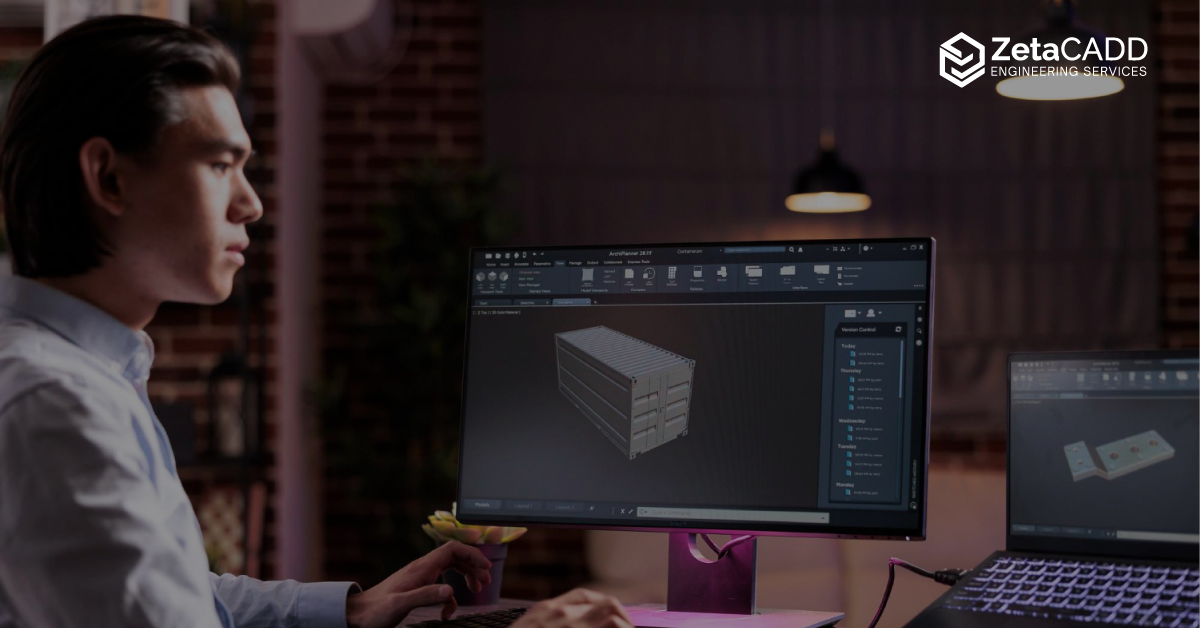How Accurate CAD Conversion Helps to Achieve Precision in Digital Transformation?
Digital transformation is no longer a distant vision. Organisations today have already gone digital, embedded cloud platforms and are now stepping into the era of embedding automation and AI into their workflows. Companies want to adopt and accelerate tech to achieve greater precision, speed and strategic insight. For industries such as aerospace, automotive, construction, and manufacturing, it begins with accurate and usable design data. This is where CAD conversion services step in.
Accurate CAD conversion lays the groundwork for digital twins, smart factories and generative design.
Clean Data – Strong Transformation
The success or failure of digital transformation really depends on the quality of data. For product-driven industries, the most valuable data is found in engineering drawings, models, and CAD files collected over decades. However, this information in outdated systems is fragmented and is not ready to use for advanced workflows like simulation, automation or digital twin technology. Converting this data into 2D -3D standardized intelligent formats powers digital transformation, and enables faster, smarter and future-ready decision making.
Enabling Smarter Digital Outcomes with Accurate CAD Conversion Services
CAD conversion is not a back-office task it is a strategic tool. Conversion of legacy design files into precise, usable data builds a reliable foundation for PLM, automation, and digital twins. It powers downstream processes like CNC machining simulation or additive manufacturing. Without accurate CAD conversion, even the most advanced digital initiatives risk running on flawed inputs.
The Role of CAD Conversion in Digital Transformation
CAD conversion does not mean simply converting data from one file type to another. The purpose of CAD conversion is to allow interoperability across the enterprise. Files must be converted keeping in mind the need for data accuracy and usability across all processes, including CNC machining simulations additive manufacturing, etc.
Types of CAD Conversion
Different types of CAD conversions are required to achieve different business objectives. The aim is to make data smarter, more actionable and future-ready.
- 2D CAD Conversion Services: Legacy paper drawings or static files are converted into digital formats. The data in these files can be accessed, searched and reused. This enables quick and informed decision-making. If your legacy data is accurately converted into 2D CAD, it allows a smooth transition into 3D modelling, advanced simulations, automation, PLM integration and AI-driven insights. This allows manufacturers to innovate faster, reduce risks, and future-proof operations.
- 2D to 3D CAD Conversion Services: Two-dimensional drawings are converted into fully parametric 3D models. These 3D models unlock the design intent that is hidden in flat drawings, they minimize rework and enhance collaboration across teams. Accurate 3D parametric models establish readiness for AR/VR, advanced simulations, automation, product lifecycle management, etc, thus turning static data into actionable insights for business growth.
- 3D CAD Conversion Services: 3D files are converted into compatible formats. It involves translating complex assemblies, features and constraints between platforms (CATIA, SolidWorks, NX, Creo, etc) while retaining accuracy, parametric intelligence, and design intent. It often entails geometry healing, remodelling and simplification, so that the 3D models can be used for simulation, CAM or PLM systems. 3D conversion is also done to make the model compatible for lightweight visualisation, reverse engineering or digital twin applications. Essentially, it ensures that 3D data is not just viewable. Instead, it remains fully usable, editable, and consistent across diverse platforms and workflows.
Best Practices for Accurate CAD Conversion?
- Standardization: Convert files into universally accepted or organization-specific formats to ensure seamless collaboration across platforms.
- Geometry healing and QC: Check and repair surfaces, and do post-conversion verification to avoid downstream surprises. Make sure models are watertight and ready for simulation or manufacturing.
- Maintain Design Intent: Preserve parametric features, constraints, and assemblies so the converted model remains editable and functional.
- Metadata Preservation: Ensure that not just geometry but the material properties, tolerances, BOM, and manufacturing data is also preserved.
- Format Compatibility: Select the right target format (native or neutral) to match downstream requirements like PLM, CAM, or visualization.
How Accurate CAD Conversion Services Fuel Efficiency?
- Improved Collaboration: Teams and suppliers across geographies use standardized files to remain on the same page and collaborate without any compatibility issues.
- Lower OPEX: Using accurate 2D and 3D files for visualisation, testing, prototyping and improving workflows, organisations save significant engineering hours and costs.
- Speed: Accurate CAD data and visualisation, reduces rework and enables faster handoffs, directly shortening the product development cycles.
- Scalability: As businesses grow or adopt new platforms, converted CAD data can scale across systems without disruption.
Additionally, data preservation is also of great value. As businesses grow or adopt new platforms, converted CAD data can scale across systems without disruption.
Accurate CAD Conversion – Strategic Foundation for Digital Transformation.
By treating CAD conversion as a strategic enabler, organizations don’t just digitize, they transform. ZetaCADD is your ideal transformation partner that helps you prepare for the future – digital twins, smart automation, AI – the possibilities are endless. With ZetaCADD, design integrity is preserved across 2D, 3D, and enterprise-wide conversions, turning legacy data into a future-ready, resilient, and competitive advantage.


